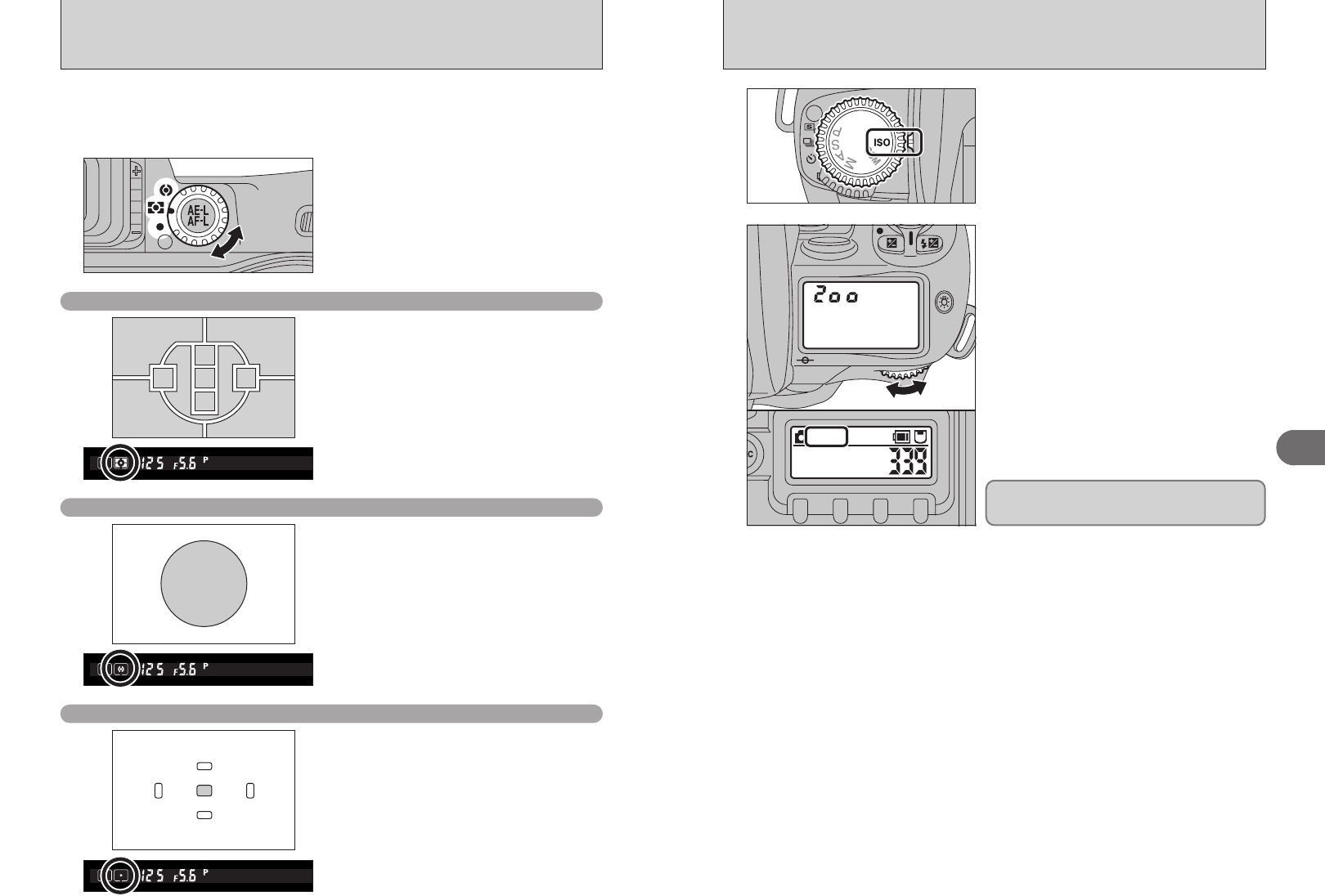
ISO200
09 / 23 / 2004
10 : 00 AM
54 55
Advanced Photography
3
METERING SYSTEMS
Normally, the Matrix metering system will provide the optimum exposure for your shot. However,
you can choose from 3 metering modes for shots where you want to select a different exposure
level (AE lock or exposure compensation) or for particular scenes (such as backlit shots or shots
with very strong contrast).
Turn the Metering system selector dial to desired
metering system.
The icon for the selected metering system appears
in the viewfinder.
The camera sets the optimum exposure based on
data (the maximum brightness and brightness
contrast) measured independently for 10 segments
in the photography screen.
With D- or G-type Nikkor lenses, 10-segment 3-D
matrix metering is used, factoring in the distance to
the subject as well as the maximum brightness and
brightness contrast to ensure even more accurate
metering.
l Matrix
(
10-segment
)
metering
Center-weighted metering determines the exposure
value based primarily on a 12-mm circle in the
center of the viewfinder.
k
Center-weighted metering
Spot metering determines the exposure value by
concentrating metering on the equivalent of a 4-mm
diameter area in the viewfinder (approx. 2% of the
entire frame).
The metering area moves to follow shifts in the
selected focus area. However, spot metering
always remains in the center of the shot when
Closest-subject Priority Dynamic AF mode is used.
j
Spot metering
ISO SENSITIVITY
1
Set the Exposure mode dial to “ISO”.
2
Turn the Main-command dial to set the ISO
sensitivity.
h Available ISO sensitivity settings
100, 160, 200 (factory default setting), 400, 800
and 1600
●
!
If you shoot dimly lit scenes with a low sensitivity setting and
without using the flash, the color tones for the entire image
may be incorrect.
Images shot in high-sensitivity photography (ISO
400 or higher) may appear coarse and may also be
affected by noise such as white dots.


















